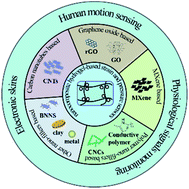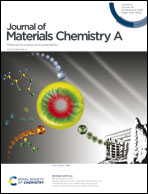Nanocomposite hydrogel-based strain and pressure sensors: a review
Abstract
Recently, flexible and wearable electronics have gained considerable research interest due to their potential applications in wearable devices, energy storage materials, electronic skins, sensors, etc. Compared to elastomers, hydrogels demonstrate more potential for flexible electronics because of their biomimetic structures, suitable mechanical properties and excellent biocompatibility. Among all the designs, nanocomposite hydrogel-based strain and pressure sensors which can transmit external stimulus to electrical signals have been intensely investigated due to their high mechanical strength, considerable conductivity and outstanding sensitivity. Numerous reports have been dedicated to the designs, preparations and applications of nanocomposite hydrogels. This review provides an up-to-date and comprehensive summary of research progresses of nanocomposite hydrogel-based strain and pressure sensors including designing strategies, preparing methods and applications of the five nanofiller based hydrogel sensors including carbon nanotube based, graphene oxide based, MXene based, polymer nanofiller based and other nanofiller based sensors. Representative cases are carefully selected and discussed regarding the fabrication, merits and demerits, respectively. Finally, perspectives and challenges are presented for the designs of future nanocomposite hydrogel-based strain and pressure sensors.



 Please wait while we load your content...
Please wait while we load your content...